SOLAR PANELS 2022 GUIDE: ARE SOLAR PANELS WORTH IT?
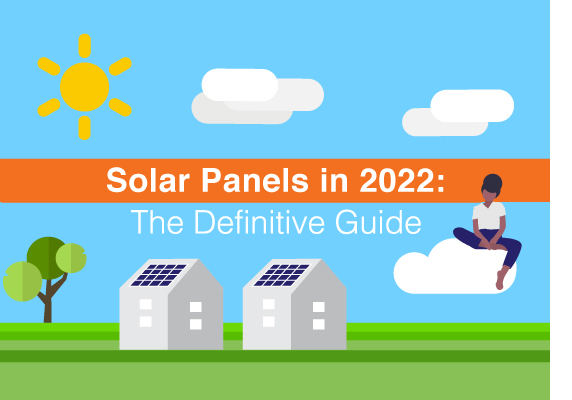
Welcome to the most complete guide to going solar in 2022.
What you’ll learn:
- Why everyone is talking about solar energy right now
- Why brands are important when it comes to choosing solar panels
- Solar trends for 2022 and why they matter
- Lots of pro tips on going solar and choosing wisely
- Solar Smart tips that can help you make informed decisions
So if you’re thinking about switching to clean solar energy this year and have a hundred questions, this guide is for you.
And even if you already know what solar is, this guide for 2022 will give you the most up-to-date info available.
Let’s get started.

SOLAR ENERGY 101
In this chapter we’re going to break down the basics of solar energy.
Including:
- Why solar energy is taking off
- Why old energy sources are running out
- Why alternative energy sources are becoming increasingly important
- Why you should look to the sun to power your home in 2022
You ready to dig in? Let’s start with the basics.

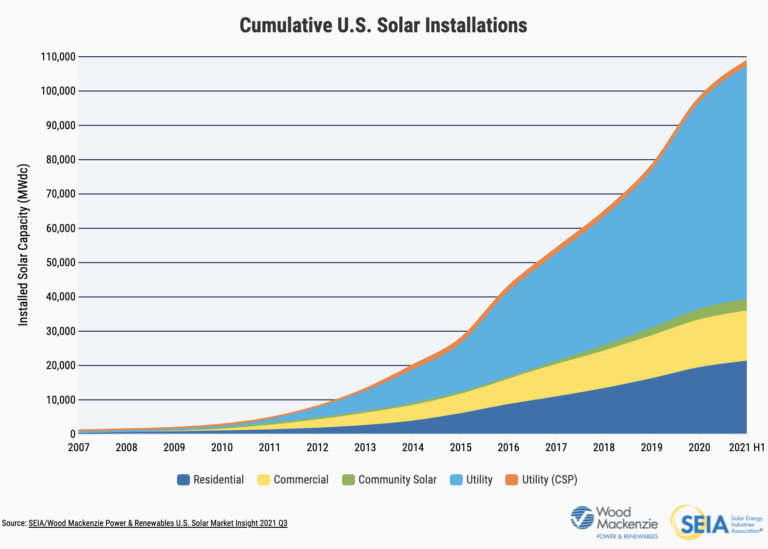
Solar Energy in 2022: The Facts
Solar energy is here to stay. With many cities and states (and countries) adopting aggressive renewable energy goals by 2050, the topic of solar energy is only becoming more important. And with good reason: it’s the leading source of renewable energy that puts power directly in the hands of homeowners across the world. Solar is the first step towards energy independence and utility companies are intimidated.
Here are the facts about the current state of solar energy.
In the last decade, solar has experienced an average annual growth rate of 42% (SEIA). And with each year of falling prices, solar continues to expand into new markets as well as more and more homes across the world. SEIA reports the cost to install solar has dropped by around 70% over the last decade which has fueled much of this growth.
Solar Energy Snapshot 2021
Let’s take a look at recent reports from SEIA that summed up the growth of solar in the first half of 2021:
- In Q2 2021, the US solar market installed 5.7 GWdc of solar capacity, a 45% increase over the second quarter of 2020 and the largest Q2 on record.
- With Q2 additions, the US officially surpassed 3 million installations across all market segments, the vast majority of which are residential systems.
- Solar accounted for 56% of all new electricity-generating capacity added in the US in the first half of 2021.
The Rise of Solar Power
In addition, according to a report from November 2021, the U.S. Energy Information Administration (EIA) states that, “solar power accounted for 3% of U.S. electricity generation from all sources in 2020.” In other words, of all the power supplied to homes across the nation, solar power accounted for around 3%. That may not seem like much, but it doesn’t stop there. At the rate solar power is growing, the EIA also predicts it will account for 4% of the U.S. total in 2021, 14% in 2035 and 20% in 2050. It helps that many cities in the U.S. are adapting 100% renewable energy goals every year.
There’s a simple explanation for this rapid growth:
Not only is solar power great for the environment, but homeowners who switch to solar power are saving thousands in electricity costs every year by choosing to produce their own energy. Here’s how one homeowner even achieved a negative electric bill.
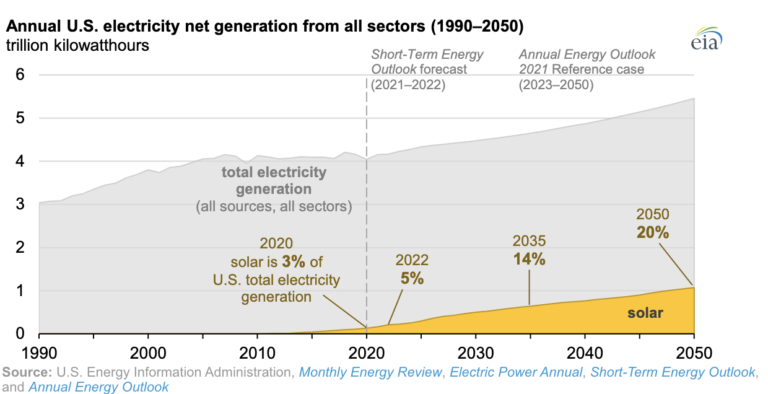
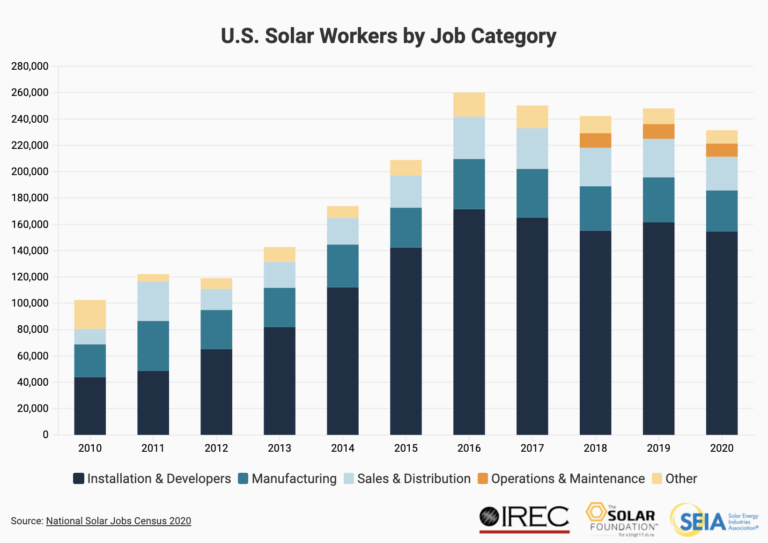
Solar as an Economic Engine
To top it all off, solar is a great economic engine. As of 2020, SEIA reports that “more than 230,000 Americans work in solar at more than 10,000 companies in every U.S. state.”
Solar also employs about 30% of individuals identifying as female and 2020 saw a significant increase in the employment of various ethnicities. In addition, veterans make up a larger share of employment than the rest of the country. (National Solar Job Census 2020) Solar is a great industry to boost the economy, as the more people who choose solar energy for their home, the more jobs it creates. These jobs include extensive training programs for the investment of knowledgeable employees that desire a lifelong career in solar.
Old News: Fossil Fuels
Our old sources of energy are running out.
That’s right. Fossil fuels (like coal and gas), the most widely used sources of energy on Earth, are non-renewable.
If you don’t believe us, take a look at this. This image shows us renewable vs. non-renewable sources and how much potential energy they provide each year.
Image source: GW Solar Institute
Non-renewable energy, otherwise known as finite, includes any form of energy that is derived from sources that were formed in the earth billions of years ago. Which means we have to keep digging deeper and deeper into the earth to find more.
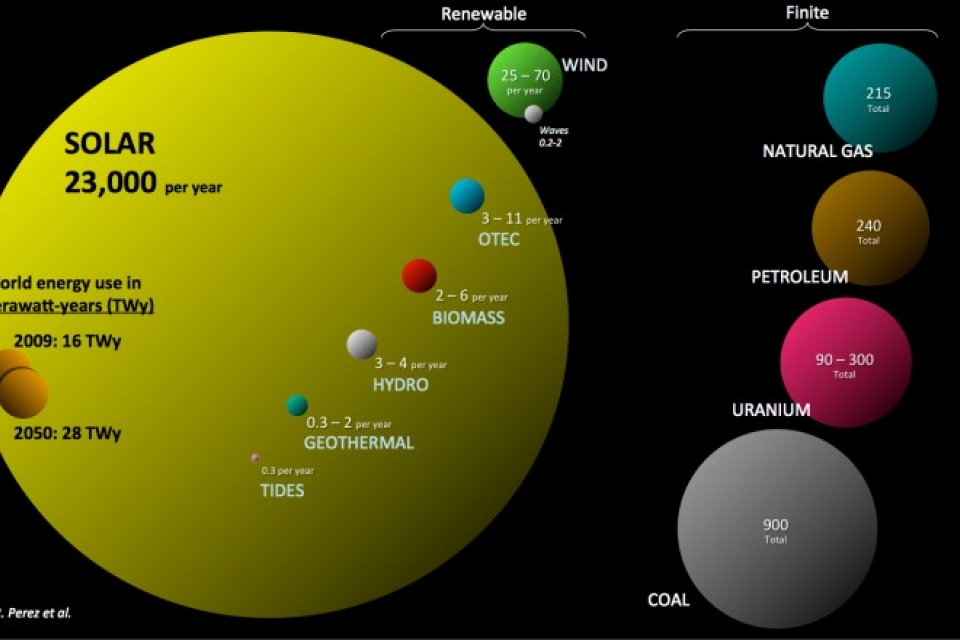
The Importance of Solar Energy in the Future
Renewable energy sources offer more flexibility to our electricity grids at a time when our grids need it most and homeowners need a break from electricity costs the most.
Read more about the future of our unstable power grid and the alternatives.
Ever-expanding electrical networks, increased demand on outdated grids, more pull of electricity required to power homes, appliances and cars — our demand for energy in the coming years is only going to intensify and become more unstable.
And the share of available fossil fuels will continue to decline.
It’s also a well-known fact at this point that clean renewable energies like solar and wind are better for our planet. The future generations who will need enough energy to power the civilizations of their own.
If we don’t curb our use of non-renewable sources soon, there will be none left for generations, not so far into the future.
It’s becoming ever more important in our current world to have alternative sources of energy.
Why Solar is the Champ of Renewable Energy
All renewables are great alternatives and all over the world, people are finding out more ways to use it. In fact, here are some facts not commonly known about renewable energy. But do you know which renewable energy source rules them all?
If you guessed the sun, you’re dead on!
The sun is the ultimate source of all other energy sources.
Think about it: everything needs the sun for power.
And the sun’s importance wasn’t lost on ancient civilizations. The sun has been studied as a power source for centuries. We’re even currently researching ways for space-based solar to take off. Why all this focus on learning and innovating solar energy generation, you ask?
The sun is nature’s power plant, and it’s available to all living things on our planet.
It’s not so hard to believe given the fact that the energy comes from the sun which is always available, every day on Earth. For those looking for a way to live more sustainably, solar is one of the greenest options.

The amount of power from the sun that strikes the Earth in one hour is more than the entire world consumes in an entire year!
Alright, got the basics down? It’s time to tackle some of the widely held misconceptions about solar energy.
Let’s move onto the technical details about how we harvest the sun for power.

PARTS OF A SOLAR ENERGY SYSTEM
In this chapter, we’re going to break down the parts of a solar energy system. If you’ve ever wondered, “How do solar panels work?” this one’s for you.
Including:
- The three types of solar panels and why efficiency matters
- Microinverters versus string inverters
- What racking is
- Why brands matter in solar
Understanding the components of a solar system is like geeking out on the latest tech gadgets. Moreover, there’s great things to come from understanding how solar panels work. Knowledge is power and you can answer tons of burning questions, like “Do solar panels get hot?” Or maybe, “Do they work on cloudy days?” Answer these questions with ease once you learn more about solar energy.
If this doesn’t appeal to you, skip over this part, but don’t miss the pro tips at the end of the section. For those curious tech hounds, let’s dig into the parts of a solar panel system.
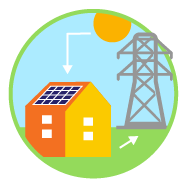
1. Solar Panels
Solar panels are the part that everyone knows about. They’re the technology that’s gathering the energy of the sun from your rooftop.
There are 3 types of solar panels.

Here’s the nuts and bolts.
![]() Monocrystalline is the most widely used type of panel for residential use.
Monocrystalline is the most widely used type of panel for residential use.
![]() Polycrystalline panels are typically less efficient than monocrystalline and are often used for commercial buildings.
Polycrystalline panels are typically less efficient than monocrystalline and are often used for commercial buildings.
![]() Thin film is more flexible, has a shorter life-span and is typically used in small solar installations.
Thin film is more flexible, has a shorter life-span and is typically used in small solar installations.

You may want to cut costs by choosing a cheaper brand of solar panels, but consider the efficiency of the solar panels you’re purchasing. You want a brand you can trust to be reliable and innovative. Whether it’s solar panels or a solar panel battery backup, you want high quality, security, and resiliency. Even 3% more efficiency can mean larger power output and a better return on your investment.
Read more about solar panel efficiency.

Choose solar panels that have a warranty longer than the life of your loan if you’re financing.
Hint: We prefer solar panels backed by industry-leading warranties.
2. Microinverters
What the heck is a microinverter?
We’re here to make it all easy for you so simply stated:
Your solar panels produce DC energy. Your home needs AC electricity.
So, just the opposite of the rock band AC/DC, the microinverter is the component that turns DC your solar panels produce into 230V AC electricity that your home can use.

There’s a whole history of solar you’ve probably never heard about. Before microinverters were
invented, string inverters were the norm. Each panel fed straight into one main inverter via
“strings” attached to each panel. The problem with this was that the system would
only produce as much electricity as its least productive panel.
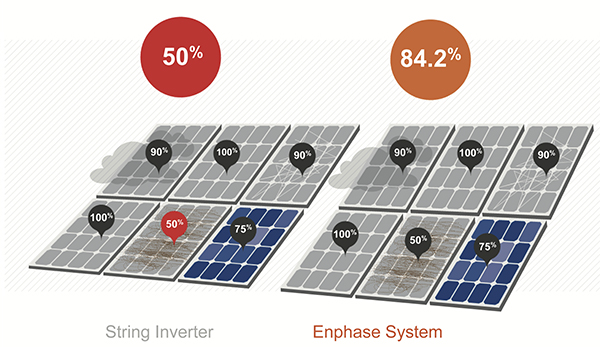

The microinverter is the component most likely to fail within 10-15 years. Choose wisely.
Hint: We prefer and only use Enphase microinverters.
Read more:
Solar Panel Microinverters: What they are and why you should care.
How Enphase is changing the game for solar power.
3. Racking
Racking is the most straight-forward component of them all.
The racking component is what the solar panels are installed on. The racking goes on your roof, the solar panels fit into the racking. It’s as simple as that.
You generally don’t need to worry about this part, this will come with the solar installation and your solar company will handle this.

The most important part of this section is to understand how important it is to consider the brands
you’re purchasing. Solar is a major investment: an upgrade to your home that can last over 25 years
and drastically increase the value of your home, but only if you shop wisely and ask the right questions.

ALL ABOUT HOME ENERGY
In this chapter, you’re going to learn all about home energy, the best ways to save energy and how the power grid powers your home.
Including:
- Understanding the power grid
- What being ‘on the grid’ and ‘off the grid’ really means
- What net metering is and how it can save you money
- Why your home energy use is important to know and how to calculate it
- How you can free yourself from your electric company
Gridlocked: What’s the Power Grid Anyways?
Anytime you start talking about rising electricity costs, outages and blackouts, it all points back to the power grid.
Going ‘off the grid’ is something you may have heard of before.
But what about being ‘on the grid’.
Do you know the difference between the two?
What is the power grid?
The power grid carries the electricity fueled by your utility company and runs throughout neighborhoods, shopping malls, office parks and across property lines. To sum it up easily, being on the grid means your home is connected to this power grid.
Read more:
Get to know the grid.
Why the Texas power grid is short on power.

What does being “off-grid” mean?
Being “off the grid” means that your home does not receives power from the electrical grid.
Solar panels and being “off-grid”
In terms of solar energy, being off the grid is different from having solar panels installed on your home. Having a solar panel system installed on your home means your home will be powered by solar energy while you’re still connected to the grid.
For this reason, solar panels alone will not work during a power outage, therefore you’ll need a solar battery for that. We’ll get to that soon, but if you can’t wait, jump there now.
Being connected to the grid certainly has its advantages. For one, if your solar panels collect more energy than your house needs (which is likely depending on your peak sunshine hours), then you have the option to “sell” it back to your utility company.
This is called net-metering, and it’s available in most states (not all, so check with your state’s guidelines on net metering.)
Net Metering 2022
As of 2021, these are the states that offer state-mandated net metering:
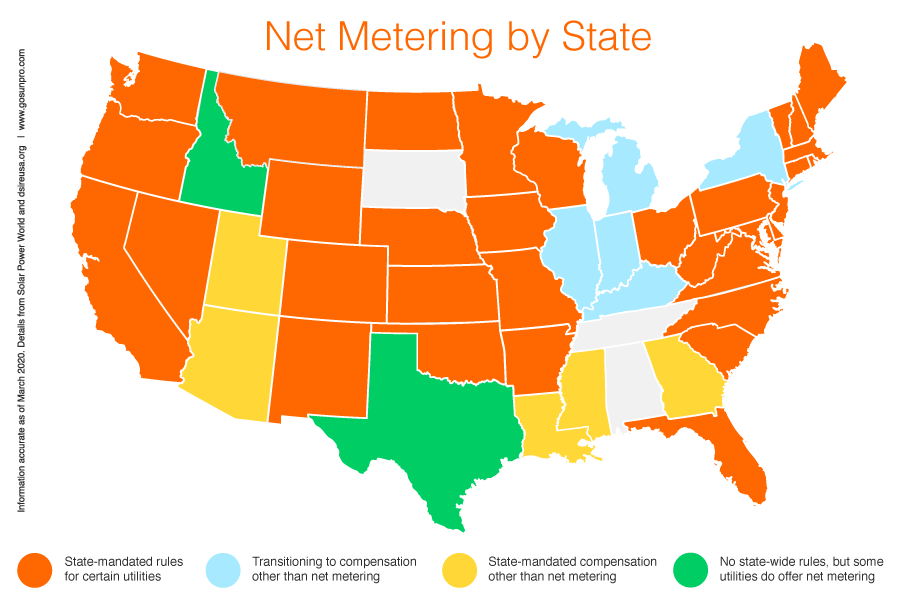
But just because your state doesn’t have a full-fledged net metering program doesn’t mean there are no options for your grid-connected excess energy. More than a dozen other states offer some form of compensation in exchange for your solar panel-produced power.
Have no fear, your solar specialist will help you understand net metering and take advantage of programs as well as solar incentives in your state.

The solar energy you produce is a lot more valuable when you keep it stored in a battery than when you sell it back to your utility company.
Read more: What is a solar panel battery?
Why Home Electricity Usage Habits are Important
Year after year, electricity prices get higher. This much we know is true. But solar energy presents you with a sensible, simple option that puts you in control of your electricity usage and costs.
With that being said, are you aware of how much energy you use in a day? This question will help you understand how many solar panels can power your home.
If not, you might want to start understanding your energy consumption habits.
For example, take a look at the wattages for common household appliances:
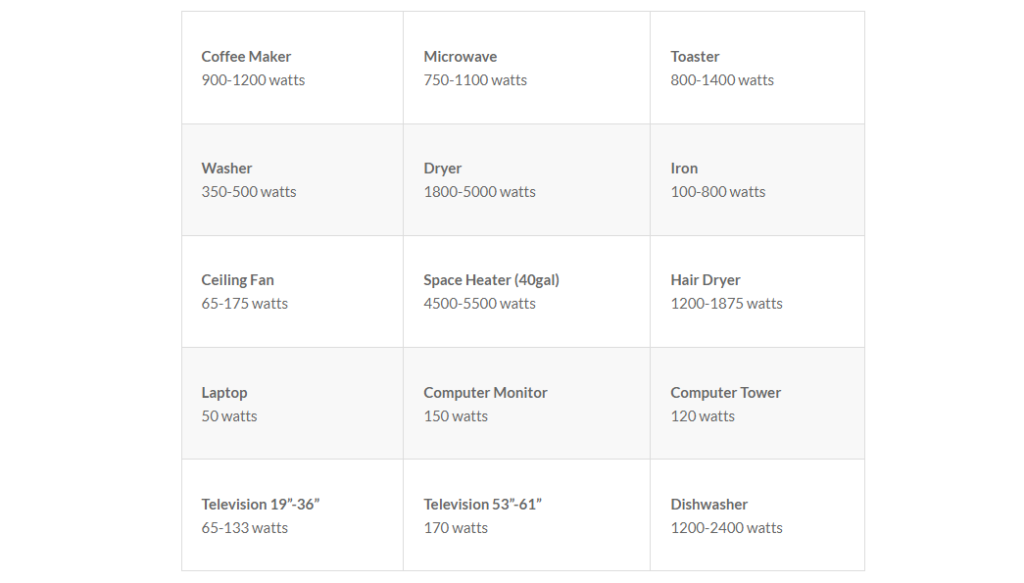
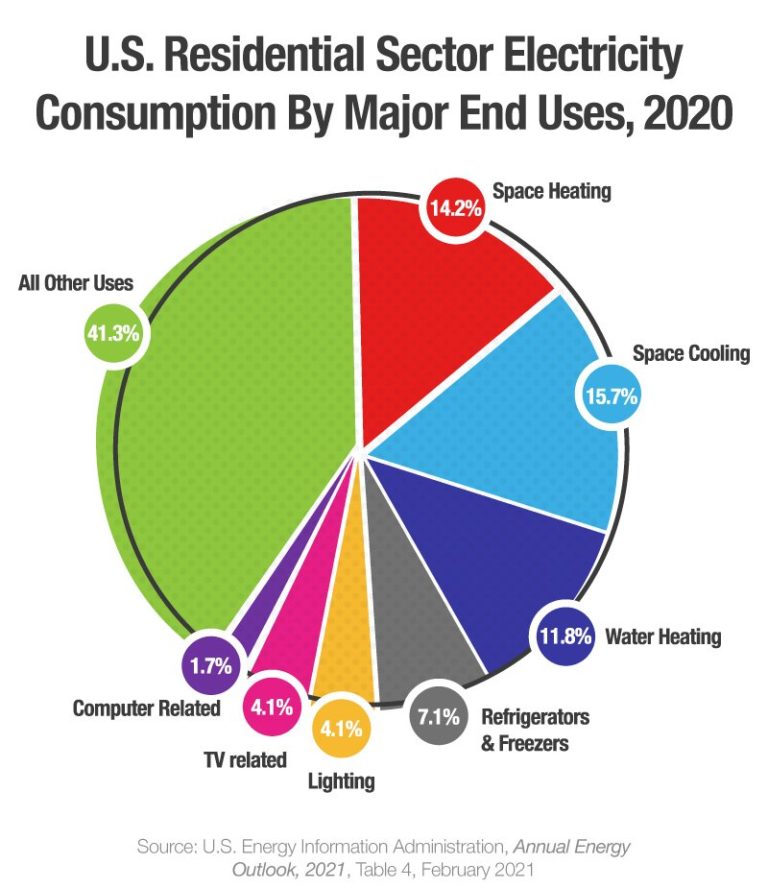

1. Calculate Watt-hours Per Day
Device Wattage (watts) x Hours Used Per Day = Watt-hours (Wh) per Day
Example: A 150-watt computer monitor used four hours per day
150 watts x 4 hours = 600 Wh/DayInstead of watt-hours. your energy bill is measured in kilowatt-hours (kWh). Since one kilowatt is equal to 1000 watts, divide the watt-hours by 1000.
2. Convert Watt-Hours to Kilowatts
Device Usage (Wh) / 1000 (Wh/kWh) = Device Usage in kWh
Example: A computer monitor using 600 Wh of electricity per day
600 / 1000 = 0.6 kWhNow, we estimate usage over a month or, for the sake of a simulated average, 30 days.
3. Find Your Monthly Usage
Daily Usage (kWh) x 30 (Days) = Approximate Monthly Usage (kWh/Month)
Example: A computer monitor using 0.6 kWh of electricity per day
0.6 kWh x 30 Days = 18 kWh/Month
4. Calculate Your Monthly Cost
Monthly Usage (kWh) x Electric Rate ($/kWh) = Approximate Cost per Month
Note: The average residential electric rate for Americans in 2020 was 13.26 cents/kWh

Climate change is requiring more power for heating and cooling. More electric vehicles (EVs) are hitting the
road and there’s more than one way to keep your EV fully charged. Meanwhile, the demand for
residential electricity is increasing as more people continue working from home.
The already fragile electric grid faces even more strain in the future.
It should come as no surprise that electricity costs are continuing to rise dramatically in 2022.
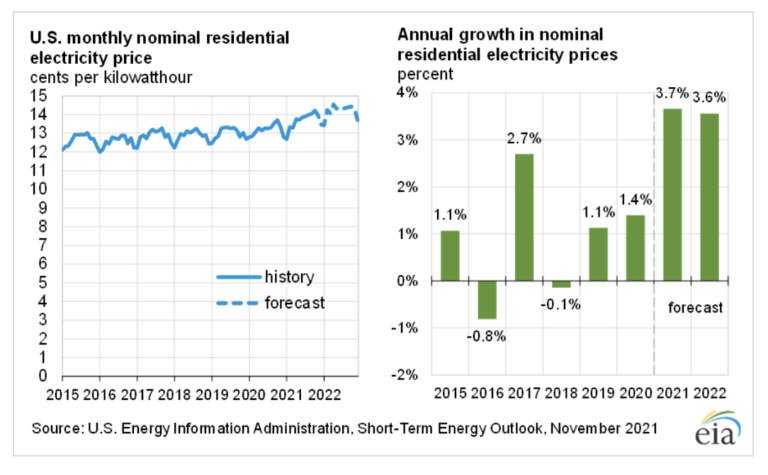
In fact, residential electricity costs are projected to rise around 3.5% in 2022; continuing a decade-long streak in climbing prices for electricity. (EIA) While there are smart ways to save money on your utility bills, the smartest way is to go solar.
Why Solar Panels Are Worth It
Electric prices keep climbing every year (but especially during the summer and winter), while the cost of solar is lower than ever before. If solar seems expensive, think about it this way.

You’ll be paying your electric company for the rest of your life, at the mercy of whatever the utility company charges. These prices will continue to increase due to lack of available energy resources and increased demand.
It’s as certain as death and taxes except the bill climbs higher every year whether you make more money or not. That’s why it’s important to understand how much energy you consume and how to read your electricity bill.
But What About My Solar Loan?
Some homeowners can pay off their solar loan in as little as 8 years with the right incentives in place, and nearly every day thereafter, they’ll produce clean energy of their own.
Of course the size of your home solar system, the amount of panels, any added battery storage and your state’s solar incentives all factor into the cost of going solar in 2022, but the important part is that you are in control.
Maybe the coolest part about going solar: there is an end date for payments (if you have a solar loan.)
The electric company can’t say the same about their traditional residential electricity bills. In fact, they’ll still continue to charge you for the energy you use even when you have solar panels, so that’s why it’s extra important to consider a solar battery system as well.

You can put your home’s power back in your hands with solar energy.
PUTTING IT ALL TOGETHER


WHAT IS A SOLAR BATTERY AND DO I NEED IT?
In this chapter we’re going to go through the ins-and-outs of solar batteries.
Including:
- What is a solar battery backup
- How it works
- Why to consider a solar battery backup
- How to protect your home from outages
- Top benefits of a solar battery
- What brand of solar battery is best?
Ready to see what the fuss is all about?
What is a Solar Battery?
A solar battery works like any other battery except for two distinct differences:
- It’s connected to your solar system
- It stores solar energy
Read more: What is a solar panel battery?
How Does a Solar Battery Work?
To understand the advantages of having a solar battery, let’s first understand how having a solar battery works into your solar panel system:
- Solar begins powering your panels in the morning when the sun rises.
- Excess solar energy charges your solar battery during peak hours.
- Your solar battery runs your home at night and during power outages.
Here is how the Tesla Powerwall, one of the industry’s leading solar batteries, works.
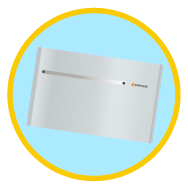
Read: Is the Tesla Powerwall Worth It?
Do I Really Need a Solar Battery?
Considering a solar battery can be a big decision.
On the one hand, it adds to the price tag of your initial solar investment, on the other hand it’s a really great investment for your home’s protection, especially during power outages and natural disasters.
Let’s break down the reasons why you need a solar battery to give your solar panels (and home) a boost.
There are 4 main reasons you’ll need a solar battery.
- Power during the night
- Less dependence on the grid and rising costs
- Complete control of your home energy usage
- Protection for your home and family during outages
Power through the night.
The first major benefit of a solar battery is freedom from your utility company. While you can’t have complete independence since you’ll still be grid-tied (as we explained earlier), you can have more freedom and flexibility than your utility company can offer you. That means whatever solar energy your panels produce can be stored instead of sent back to the grid. Remember how we said the electricity you produce is 2-3 times more valuable? Well, now you can keep it all! Use it at night, during outages, or when the sun isn’t shining as much.
By the way, solar panels do work on cloudy days and can even withstand hurricanes and hail!
Avoid surging electric prices.
Because you have more freedom from the utility company, you won’t be trapped by the rising rates each year. The cost of energy is constantly rising due to energy resources running out, so this will become an ever-increasing issue.
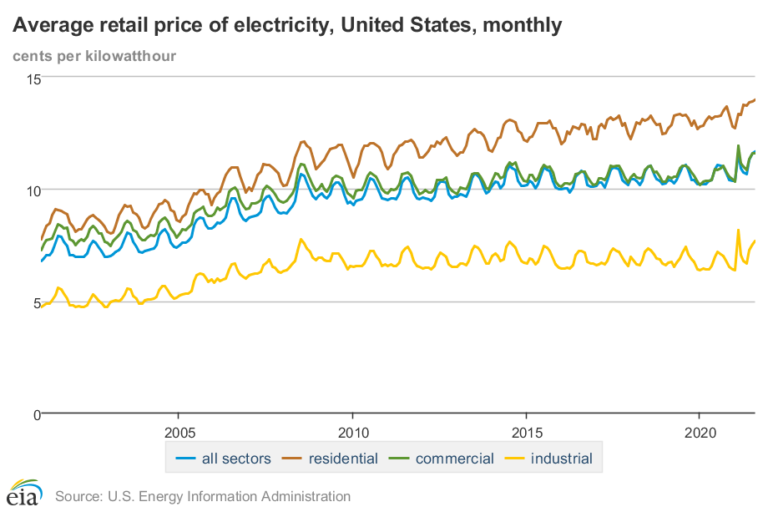
But just because your state doesn’t have a full-fledged net metering program doesn’t mean there are no options for your grid-connected excess energy. More than a dozen other states offer some form of compensation in exchange for your solar panel-produced power.
Have no fear, your solar specialist will help you understand net metering and take advantage of programs as well as solar incentives in your state.
Monitor your energy.
Wondering how much electricity you use during the day and how much your solar panels produce? Having a solar battery system with the most up-to-date technology, like the Enphase Encharge or Tesla Powerwall, can help you keep your power in your control. There are other ways to approach green living as well, such as using smart light bulbs and smart appliances. Overall, green improvements are the best ways you can power your home and monitor your energy. Using a mobile app, you can monitor your home energy system in real time, get weather related updates and even control what appliances are getting powered during outages with Enphase IQ technology.
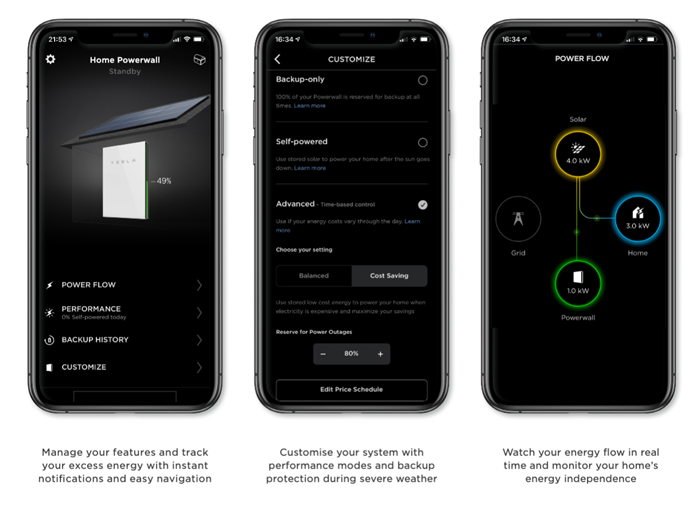
Protect your home.
Do you live in an area where natural disasters are likely to occur? This is when having a solar battery really sets you apart from the rest of your block. A solar battery can keep your home powered when the rest of your block loses power, even under normal situations like routine outages.
Read more: Solar panels and power outages: what you need to know.
Other important reasons to consider.
Homes that operate essential equipment that cannot have interruption like medical equipment, homes with small children, or even homes in extreme climates that need heat and AC to keep occupants comfortable.
Read more:
How long do solar batteries last?
Difference between a solar battery and a generator.

In most situations, you’ll want your home to stay powered ‘on-grid’. But to get an ‘off-grid’ like
experience, you can stack solar batteries to cover the full amount of electricity your home uses.
That way you’ll store as much energy as you’ll need during a power outage. A qualified solar specialist
can help you figure out how many batteries you’ll need.

A solar battery is covered under the solar federal tax credit, as well as many other statewide solar rebates and state incentives.
Make sure to ask a professional about what may be covered in your particular situation.

You may have noticed a lot of extreme weather in 2021 like in Texas and
California, causing wide areas of power outages. You can stay ahead of disaster preparation
by arming yourself with a battery backup.
Which solar battery is best?
Solar battery backups are the undisputed champs of energy storage. There are several important things to look out for when shopping for the best solar battery available for your home. Terms like depth of discharge, round-trip efficiency, lead acid and lithium ion. This can all get confusing pretty quickly, but don’t worry, we’re here to help you out.
Depth of discharge (DoD) and round-trip efficiency (RTE)
In short, all these terms are referring to is the amount of charge a battery can hold and how long it can be used before needing to be charged. All you need to know is: look for a DoD over 95% and a RTE of 90% and over.
What is a solar battery made of?
There are generally two types of solar panel battery for your home and they are made of lead acid or lithium ion. The quick facts: lithium ion batteries are more expensive but last a lot longer than lead acid. They are also a lot safer, with Lithium Iron Phosphate (LFP) being the safest option, compared to Nickel Manganese Cobalt (NMC).
If you want to read more about any of these terms and see how the Enphase IQ compares with the Tesla Powerwall, read: Enphase IQ battery vs. Tesla Powerwall
Keep reading to find out everything you need to know before choosing the right solar company for your solar journey.

WHAT YOU NEED TO KNOW BEFORE SOLAR PANEL INSTALLATION
Now it’s time to give you all the tools you’ll need to make an informed decision about going solar in 2022. Specifically, our pro tips for staying an informed consumer with all the confusing information out there.
Including:
- How to choose the right solar company
- Why warranties make a difference
- How to avoid solar scams
- How to choose the right amount of solar panels
- How to take advantage of the new tax credit for 2022
Let’s get to it.
Where to Start
Solar power for your home is now more accessible than ever before, which means your decision to switch comes with many more considerations. That includes one very important question: where do you start?
If you’re convinced that solar is the way to go, it’s natural to feel puzzled about what to do next.
Let’s start with making the big decision. It can be the most dreaded step, yet, the most important part of the process.
How Do I Choose the Right Solar Company?
There are so many companies to choose from, so many different products and, like any purchase, there are even scams to be on the lookout for.
Before a single panel is placed on your roof, you’ll want to be prepared. When you know what to expect from the technology and the install team behind it, the switch to solar is easy.
In our experience, it’s a pretty exciting decision; especially when our customers are able to finally take control of their energy.
But don’t worry if you feel overwhelmed. We’re here to help!
Let’s just breathe and break it down together with our unique pro tips.


Pro Tip #1: Find the Warranties
Buying a solar PV system is a huge investment for your home and should be treated like one. Your car has insurance, so why not have peace of mind when purchasing a solar system?
The solar panels on your roof will produce power on a daily basis, but it’s important to make sure that they last longer than the time it takes you to pay for them. A warranty is a crucial sign to determine the lifetime of the panels as well as the efficiency over time.
After making the decision to switch to solar power, this is possibly the most important thing to look out for when choosing solar products and a company that will provide and install them.
Once installed, a solar panel system is as much a part of your home as the roof on which it’s installed — even more reason to be picky when it comes to quality.


Pro Tip #2: Be on the lookout for scams
You might have heard a lot about solar scams. There are a lot out there, which is why it pays to choose a trusted name company.When you provide solar service to thousands of customers in multiple towns, cities and states across America, reputation matters. More often than not, the level of trust in a company factors substantially into a customer’s decision to go solar in the first place.When you’re in our position, you simply can’t afford to overlook trust. The same is true if we were in yours.
So how can you avoid a solar scam?
- Check reviews. Any company that has mostly bad reviews is a company you want to stay clear of.
- Talk to your neighbors. If you know anyone who made the decision to go solar, listen to their experience. Use it to help you ask the right questions.
- Choose warranties. As we already mentioned, choose a company that backs their products and installs 100%. This is key to protecting your investment.
- Be aware of anything that sounds like, well, B.S. Stay away from any company quoting things like 100% consumption or something that’s too good to be true.
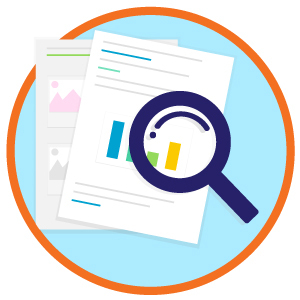

Pro Tip #3: Maximize the amount of solar panels during install
One of the biggest regrets homeowners have after their install is that they wish they would have installed more solar panels when they had the chance. They see the amount of power produced, and they want even more — especially if it means they can connect to a home battery like the Enphase IQ battery or the Tesla Powerwall to store excess power or sell it by way of net metering.
If you decide at some point after your install that you want more panels, it will be complicated and expensive, while adding additional solar panels to the original quote can be surprisingly cheap. Even though it may be increased initial installation costs, it’s a smart thing to consider.
How Many Solar Panels Do I Need?
If you want to lower your monthly electricity bill, there are so many energy efficient upgrades you can make. But when it comes to solar panels, how many you need will be determined by exactly how much you want to lower it.
If you just want half your electricity use to be reduced, your solar panel system will probably be smaller. A great first step is learning how to read your electricity bill to find out how much energy your home is using.
And if you’re looking to cover all your electric needs, you’ll probably need a larger solar panel system, which means of course, more solar panels
Read: How Many Solar Panels Do I Need?
However, if you have limited roof space you could instead use higher efficiency solar panels. This would mean fewer solar panels, but greater generation rates.
At the end of the day, the size of your solar panel system depends entirely on your needs.
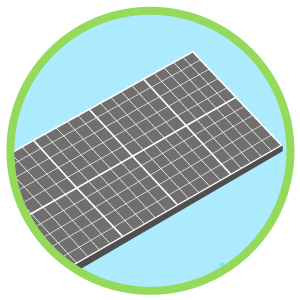

Depending on several factors, the amount of solar panels needed to power your home can vary greatly.
For example, for an 1800 sq ft house, it can be around 25-30 panels. If you’re interested in how
many solar panels it might take to power your home, you can get a free estimate from a solar energy
professional and they can help you maximize the benefits of solar energy for your home.
You may also want to consider investing in a solar energy battery, which will store any excess energy your panels will produce. This will allow your home to run on renewable energy even at night.
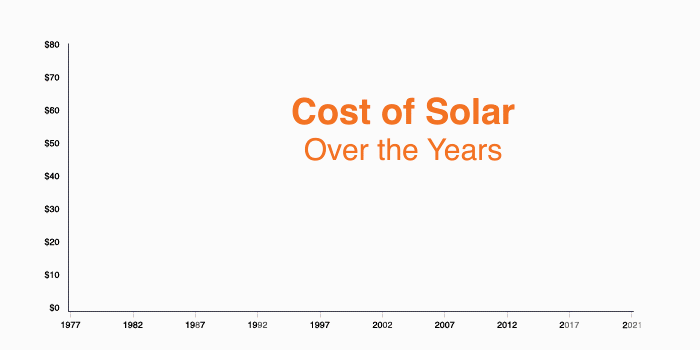


OWNING SOLAR
So you went solar. Congratulations and welcome to the clean energy club! Thanks for helping make the world a better place now and for future generations. Now here are a few important things you need to know.
In this chapter we’re going to go over everything you need to know about owning solar (for those of you who are curious what it’s like to actually have a system).
Including:
- What type of maintenance solar panels need
- How much solar can increase the value of your home
- How to monitor your home energy use
Starting in 3, 2, 1….
Solar Panel Maintenance
The good news: Solar panels have no moving parts, so the maintenance is a breeze.
In addition, solar panels are built to withstand weather, including hail and hurricanes! And most of the time, panels will be mounted tilted, which means the rain already cleans them off for you.
You may also hose them down or use a leaf blower if it’s been dry weather to keep them running at their highest possible efficiency.
If you live in snowy climates, you may need to wipe them off with a long squeegee or lukewarm water.
And if you have a warranty (and production guarantee) through your solar panel company, then you shouldn’t have anything to worry about.


We love to debunk myths about solar, and one of these myths includes the fact that solar panels
actually work better in cold climates than warm climates. This is because the panels don’t run as
hot which can limit some brands of solar panel’s efficiency.
In addition, high-quality solar panels are made for high efficiency in all weather and are made to withstand the elements.
Read more about solar panel efficiency and why it’s important.
Solar Panels and the Value of Your Home
Here’s some more great news: having solar installed will most likely increase the value of your home.
According to data from Zillow, adding solar to your home can increase the value, depending on where you live (check your local area information).
Here are the top 10 states with the highest solar premiums, according to Zillow’s findings:
- New Jersey: 9.9% or $32,281 for the median-valued home.
- Pennsylvania: 4.9% or $8,589 for the median-valued home.
- North Carolina: 4.8% or $8,996 for the median-valued home.
- Louisiana: 4.9% or $7,037 for the median-valued home.
- Washington: 4.1% or $15,916 for the median-valued home.
- Florida: 4% $9,454 for the median-valued home.
- Hawaii: 4% or $24,526 for the median-valued home.
- Maryland: 3.8% or $10,976 for the median-valued home.
- New York: 3.6% or $10,981 for the median-valued home.
- South Carolina: 3.5% or $5,866 for the median-valued home.
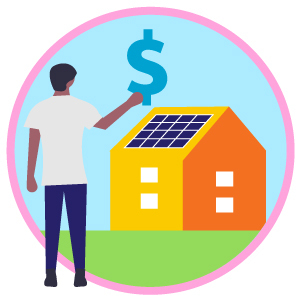

Watch: The Rise of Solar Power

If you have Enphase IQ microinverters and IQ battery installed, monitoring the energy
use of your home is a breeze. This means added savings and control of your home for years to come.
Monitor your energy use like a pro
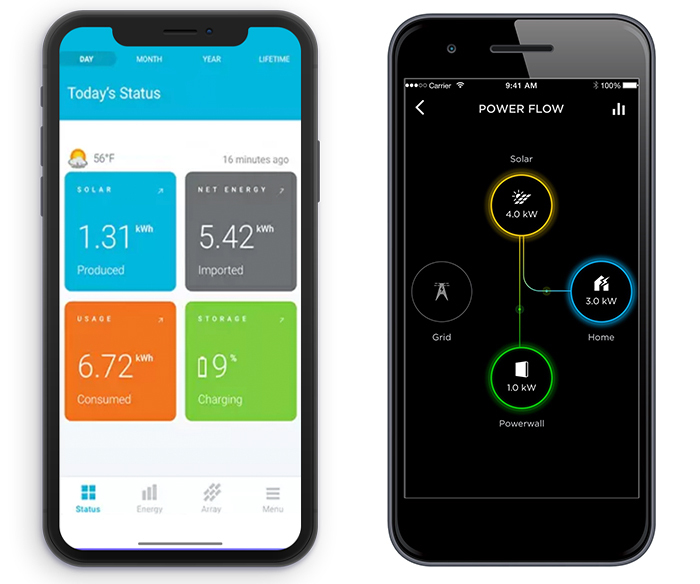

If you have warranties on all the equipment and service, you can rest easy knowing you’ve made a
sound investment in clean energy.
Look for something like;
- 25 Year Labor Guarantee
- 25 Year Power Production Guarantee
- 25 Year Panel Module Performance Guarantee
- 25 Year Enphase Microinverters Guarantee

TOP 2021 QUESTIONS ABOUT SOLAR ANSWERED
So you want to go solar but you still have a ton of questions?
It’s likely Google didn’t give you the information you needed this year, and maybe you’re not quite ready to ask a Solar Energy Specialist.
No problem. We’ve got you covered.
We compiled a list of all the TOP questions about solar that were asked in 2021. And we answered them all for you in a clear concise way that helps you know what you need to know all in one handy guide. Also check out the pros and cons of solar panels.
Are solar panels worth it?
Going solar is an investment that keeps on giving. Solar helps you gain control over your home’s energy, can reduce your carbon footprint, and may even reduce your power bills.
And with the new federal tax credit increase to 30%, solar might be a great deal for you.
Here are just a few reasons why solar panels could be worth it for your home.
- Help protect the environment from harmful pollutants.
- Save on your electricity bill.
- Experience increased freedom from the utility company.
- Protect your home from outages.
- Be in control of your home energy and fluctuating energy costs.
That sounds great, but is solar energy right for my home?
There are many things to consider when thinking about going solar. If you’re wondering whether solar panels are worth it for your individual situation, get a free evaluation from an expert who can answer your questions and help you understand if going solar is right for you.
Schedule a no-pressure consultation with an MG Solar Energy Specialist.

Here are a few more reasons why solar is worth it in these areas:
- Is solar worth it in California?
- Why solar is worth it in New Mexico.
- Are solar panels worth it in Las Vegas?
- Are solar panels worth it in Texas?
- Why solar panels are worth it in Florida.
Are solar panels expensive?
The cost of solar panels depend on a lot of things.
The price of solar panels can seem high at first. Until you start breaking down the cost with a trained solar expert. They can help you do the math to understand what makes sense for you.
And with things like solar leases and power purchase agreements (PPAs), going solar can be more doable than you think.
Let’s put it this way. You’ll be paying your electric company every month for the rest of your life. And the cost of electricity is going up each year (see chapter 3).
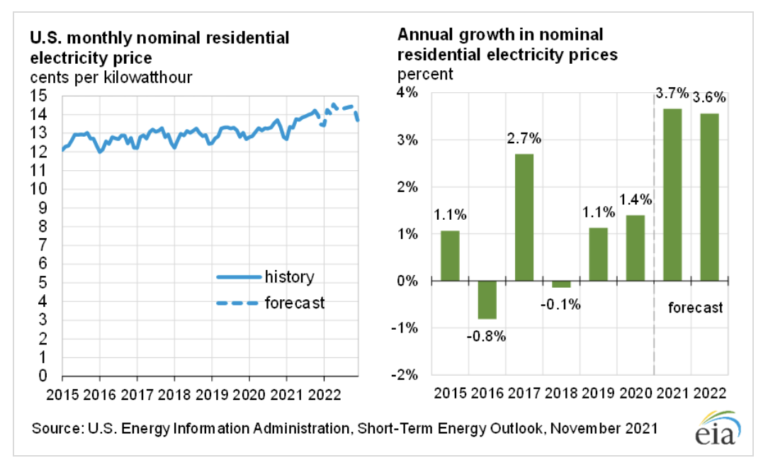
Unless you have a fixed rate, (someone, anyone?) you’ll be vulnerable to these rising costs, especially as fossil fuels become less available. Because, don’t forget, they’re running out (see chapter 1).
But when you go solar, you’ll own the energy for your home. Even if you finance your solar system, you’ll pay a fixed rate each month instead of increasing, unpredictable rates. That means no more energy bill surprises. And with things like net-metering, federal and state incentives, solar tax credits and rebates, you may end up making money in the long run.
Just let us help you crunch the numbers and find out.
Oh, and by the way, you could help offset the cost of your solar system by using the MG Solar Referral App.
Do solar panels increase home value?
Solar panels do increase your home’s value, according to studies. Let’s take a look at some of these findings.
The Department of Energy and Berkeley Laboratory did a price-premium analysis for homes with solar across 8 different states on nearly 4,000 homes.
- They found that buyers are willing to pay an extra $12,000 to $15,000 for a home with even an average-sized solar array.
And according to a comprehensive report done by the US Department of Energy and National Renewable Energy Laboratory (NREL):
- Each additional $1 in utility bill savings from your solar installation can add $20 to your home value.
This means, not only can you save on your home’s electricity bills, but for every dollar in savings, you’re also adding to your home’s value. What more could you want? And if that wasn’t enough, when you’re ready to sell your home, they also found that homes with solar arrays sold 20% faster, and for 17% more. Solar panels for the win.
What are solar panels made of?
Simply stated, solar panels are made of a few key ingredients: silicon, metal, and glass.
Nothing toxic, no moving parts, nothing to worry about, just clean energy converted from sunlight.
Read more.
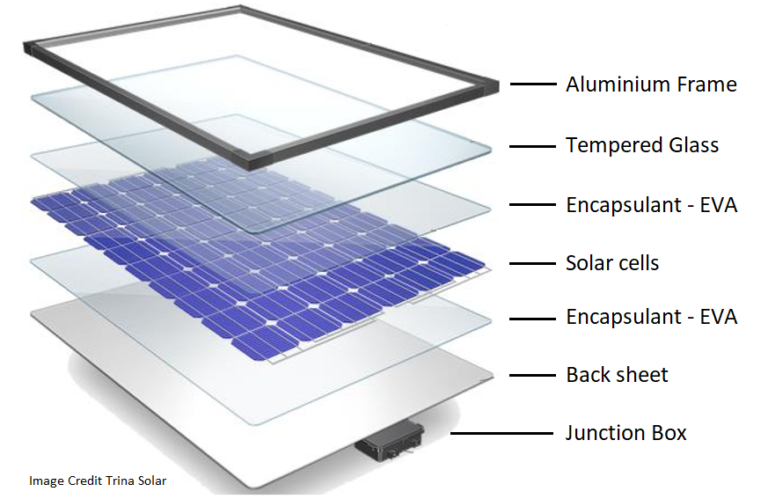
Do solar panels work on cloudy days?
Solar panels will work on cloudy days for the same reason you can get a sunburn on a cloudy day. Solar panels will absorb some sunshine, depending on how much sun is coming through the clouds.
On cloudy days, solar panels will generate around 10 – 25% of their normal power output.
Although solar panels do not work as well in rainy or cloudy weather, they do still work and depending on your particular situation, that may be just enough.
In fact, some of the cloudiest cities house some of the country’s best solar producers. So don’t let that deter you from installing solar panels on your home. Talk to a professional about it.
Are solar panels toxic?
There are a bunch of solar panel myths out there about solar that just aren’t true. This is one of them.
Solar panels on your home are not toxic. They will not leak and they will not do damage to you or your home.
In fact, they are the only form of electricity generation that has no moving parts.
Solar panels are made from silicon, metal, and glass which takes the sun’s energy and creates a reaction to create photons (light energy particles) which then sends it to be converted to electricity for your home. That’s it.
But what about the pollution they cause after their lifespan is over?
The good thing is that solar panels are built to last for 25 years or more. In fact, most decent solar panel manufacturers have a warranty for 25 years.
When your solar panels are finally done working, you may be able to recycle them some of the parts. This is because solar panels are made from silicon, metal, and glass, and all of these materials are useful for other things. In fact, they can be processed to re-use with around 80-100% recycling efficiency!
There is a lot of research already out there about recycling solar panels. Read about it.
While that doesn’t erase the damage of the trash or the energy that it takes to manufacture them, we’d like to think that offsetting the amount of energy you’ll be producing in the lifetime of your panels could just be worth it:
After 25 years, a 6.6 kW system will have a net saving of around 243 tons of CO2 from the air!
We can’t argue with reducing our carbon footprint by that much.
Are solar panels toxic?
There are a bunch of solar panel myths out there about solar that just aren’t true. This is one of them.
Solar panels on your home are not toxic. They will not leak and they will not do damage to you or your home.
In fact, they are the only form of electricity generation that has no moving parts.
Solar panels are made from silicon, metal, and glass which takes the sun’s energy and creates a reaction to create photons (light energy particles) which then sends it to be converted to electricity for your home. That’s it.
But what about the pollution they cause after their lifespan is over?
The good thing is that solar panels are built to last for 25 years or more. In fact, most decent solar panel manufacturers have a warranty for 25 years.
When your solar panels are finally done working, you may be able to recycle them some of the parts. This is because solar panels are made from silicon, metal, and glass, and all of these materials are useful for other things. In fact, they can be processed to re-use with around 80-100% recycling efficiency!
There is a lot of research already out there about recycling solar panels. Read about it.
While that doesn’t erase the damage of the trash or the energy that it takes to manufacture them, we’d like to think that offsetting the amount of energy you’ll be producing in the lifetime of your panels could just be worth it:
After 25 years, a 6.6 kW system will have a net saving of around 243 tons of CO2 from the air!
We can’t argue with reducing our carbon footprint by that much.

*Tax and credits or incentives including those provided by federal, state, or local governments may change or end. This can impact the amount of money you might save. Consult a tax professional to understand any tax liability or eligibility for any tax credits that may result from the purchase of your solar system.
**If you have taxable income and own the system, you may qualify for the federal investment tax credit (ITC). It is your responsibility to determine your eligibility and to apply. Consult a qualified tax professional for assistance and details.

